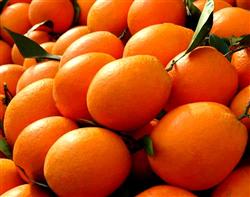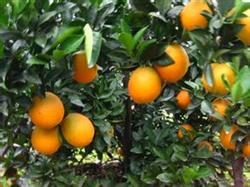Pruning methods of large and small year trees of navel orange

After the navel orange enters the full fruit period, if the management is not good, the nutrition can not keep up, it is easy to appear big and small years. There are different pruning methods for large and small annual trees and high-yield and stable-yield trees. 1. Big year tree pruning: big year tree pruning refers to winter pruning, early spring pruning and summer pruning before big year fruit. The following measures are usually taken: first, thinning the dense weak branches, cross branches and disease and insect branches; second, retreating the declining branches and falling fruit branches; second, thinning the closed branches in the upper and middle parts of the crown to make the light enter the canopy; fourth, short cutting the mother branches of summer and autumn shoots. Because there are too many mother branches that can form flower buds in the big year, it can reduce the number of flowers and promote vegetative growth by reducing the number of flowers and promoting vegetative growth by thinning 1 beat 3 weak mother branches, short cutting 1 hand 3 strong mother branches and leaving 1 hand 3 mediocre mother branches. Due to the great difference in annual yield, there can be more short pruning, less flowering mother branches and more flowers pruning, so that the big annual yield is relatively reduced and the small annual yield is relatively increased; fifth, the partial fruiting branches and deciduous branches in July promote autumn shoots and increase the small annual fruiting mother branches; sixth, after the second physiological fruit drop stops, fruit thinning is carried out by stages, and finally fruit is retained according to the leaf-fruit ratio of 50 to 55. Seventh, the big year trees with slightly more fruit can be cut to promote flowers in August to September, in order to increase the number of small flowers; eighth, autumn combined with heavy fertilizer for root cutting or water control to promote flower bud differentiation. two。 The pruning of a small tree: the pruning of a small tree refers to the pruning of a big tree after fruit harvest. Due to too much fruit in the big year, consuming more nutrients, less shoot, and even weak tree, malnutrition, flower bud differentiation is difficult, resulting in less fruit in the second year, becoming a small tree. The pruning of young trees is best carried out before budding and budding. The measures taken for pruning are as follows: one is to retain the fruiting mother branches as far as possible, and to retain the weak spring shoot vegetative branches in summer, autumn and inner chamber that can blossom and bear fruit; the other is to cut short and delete the weak branches outside the crown and the fruiting mother branches in summer and autumn after fruiting. The short shears should pay attention to the selection of full buds to renew the branch groups; the third is to carry out summer thinning after flowering and fruiting to remove the weak branches that have not blossomed and bear fruit, so that the crown is ventilated and transparent, the branches are strong, and the yield is increased; fourth, the cross branches and declining branches are thinned and deleted in winter after fruit harvest, and the bore branches in the crown are also rejuvenated by short cutting.
- Prev

Harvesting and fresh-keeping Technology of navel Orange
It is the harvest season for navel oranges. If the fruit growers only pay attention to the early management of the orchard and ignore the technology of fruit treatment, fresh-keeping and storage after fruit harvest, it will lead to fruit deterioration, decay, high yield and poor harvest. Pay attention to the postharvest navel orange fruit, which is usually colored on 80% of the fruit surface, and the fruit remains unchanged.
- Next

Key points and points for attention in cultivation techniques of Red Meat navel Orange
Red meat navel orange, also known as Caracara navel orange. 1. Adaptability and suitable planting area: good heat condition, navel orange suitable planting area with large temperature difference between day and night from the end of October to November before fruit ripening, and suitable for planting after the end of December or short time in winter frost or frost. two。 Key points of cultivation techniques and attention.
Related
- Moge, come on! The staff of the peasant association in the producing area of cantaloupe were frightened when the crowd gathered.
- Causes and Solutions of low Fruit setting rate of Apple
- Symptoms and control measures of passion fruit virus disease
- Fruit growing lesson: how do apple orchards keep high yields?
- Can you build orchards in the mountains? What are the pros and cons?
- How to manage the coloring period of Crisson grape?
- This paper introduces the processing technology of two kinds of fig products.
- How much is a month for retired teachers in rural areas by 2020?
- How can strawberry planting increase sugar content? We should pay attention to management in many aspects.
- What are the cultivation techniques on how to improve the yield of golden fruit?

